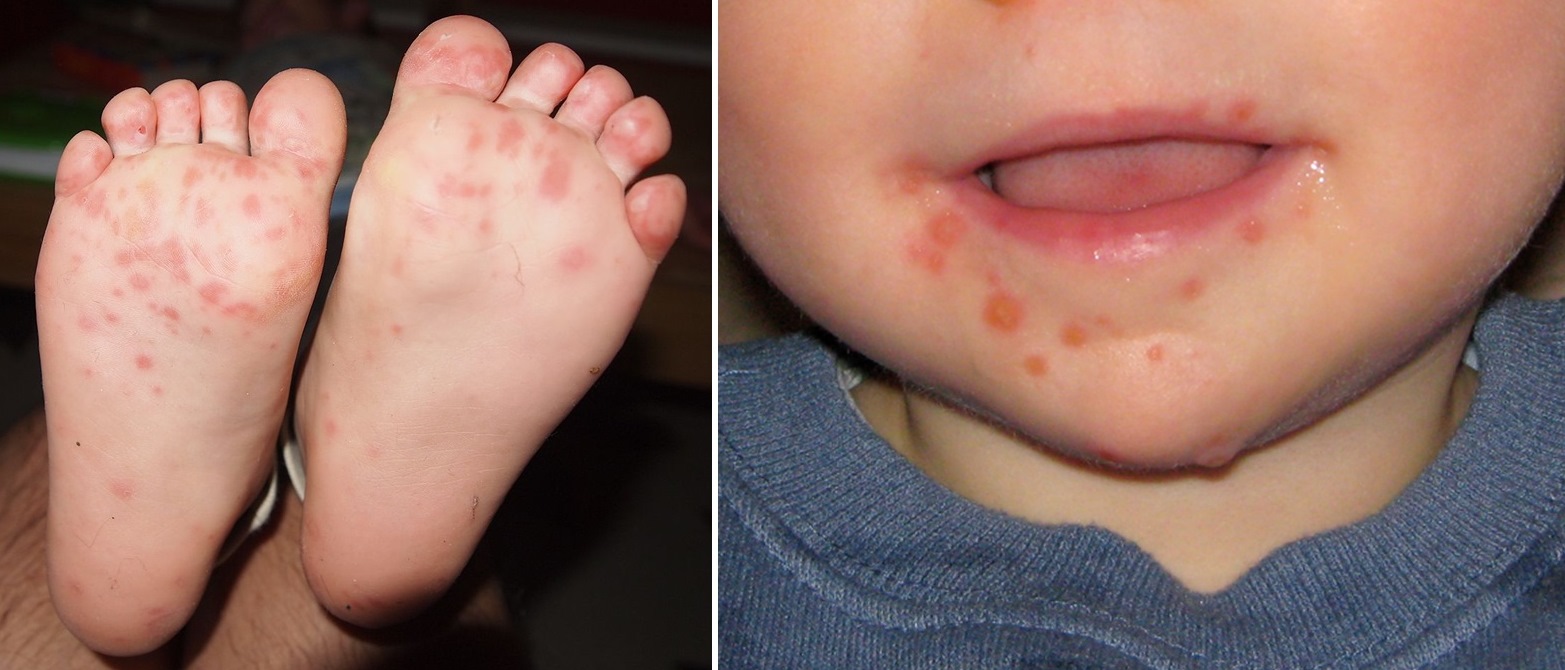Symptoms and Diagnosis: Hand Foot And Mouth Disease

Hand foot and mouth disease – Hand, foot, and mouth disease (HFMD) is a common childhood illness caused by a virus. The virus can spread through contact with an infected person’s saliva, mucus, or feces. Symptoms of HFMD typically appear within 3-7 days after exposure to the virus.
The most common symptoms of HFMD include:
- Fever
- Sore throat
- Loss of appetite
- Rash on the hands, feet, and mouth
The rash associated with HFMD typically consists of small, red bumps that may blister. The rash can be itchy and painful. In some cases, the rash may also spread to the buttocks and genitals.
Diagnosis
HFMD is typically diagnosed based on the patient’s symptoms and a physical examination. The doctor may also order laboratory tests to confirm the diagnosis. These tests may include:
- Viral culture
- Serology
- Polymerase chain reaction (PCR)
Viral culture is the most definitive test for HFMD. However, it can take several days to get the results back. Serology and PCR tests can be used to detect antibodies to the HFMD virus in the blood. These tests can be more rapid than viral culture, but they may not be as sensitive.
| Symptom | Diagnostic Criteria |
|---|---|
| Fever | Temperature of 100.4°F (38°C) or higher |
| Sore throat | Pain or discomfort in the throat |
| Loss of appetite | Significant decrease in food intake |
| Rash | Small, red bumps on the hands, feet, and mouth |
| Viral culture | Isolation of the HFMD virus from a clinical specimen |
| Serology | Detection of antibodies to the HFMD virus in the blood |
| PCR | Detection of the HFMD virus genome in a clinical specimen |
Treatment and Prevention
:max_bytes(150000):strip_icc()/GettyImages-14372670171-66c5b5bbfe70418a9a8f8149b0f11bca.jpg)
HFMD is usually a mild illness that resolves on its own within 7-10 days. However, there are some treatment options available to relieve symptoms and prevent complications.
There is no specific antiviral medication for HFMD. Treatment is supportive and focuses on relieving symptoms such as fever, pain, and discomfort. Over-the-counter pain relievers such as ibuprofen or acetaminophen can be used to reduce fever and pain. Gargling with warm salt water can help soothe sore throats. Adequate hydration is important to prevent dehydration, especially in young children.
Prevention
Preventing the spread of HFMD is important to reduce the risk of infection. Good hygiene practices are essential, including frequent handwashing with soap and water, especially after using the toilet, changing diapers, and before eating. Avoid touching your eyes, nose, or mouth with unwashed hands. Clean and disinfect frequently touched surfaces such as doorknobs, countertops, and toys.
Vaccination is another effective way to prevent HFMD. The HFMD vaccine is available in some countries and has been shown to be effective in reducing the incidence of the disease.
Tips for Preventing HFMD in Schools and Daycare Settings, Hand foot and mouth disease
- Encourage frequent handwashing with soap and water.
- Provide hand sanitizer dispensers throughout the facility.
- Clean and disinfect frequently touched surfaces regularly.
- Isolate children who are showing symptoms of HFMD.
- Notify parents of any cases of HFMD in the school or daycare.
Hand, foot, and mouth disease (HFMD) is a common childhood illness that can cause fever, sores in the mouth, and a rash on the hands and feet. The virus that causes HFMD is spread through contact with infected saliva, mucus, or feces.
There is no specific treatment for HFMD, but most cases are mild and resolve on their own within a few days. However, in some cases, HFMD can lead to serious complications, such as meningitis or encephalitis. Mark Warner , a former Governor of Virginia, was diagnosed with HFMD in 2014.
Warner’s case was severe, and he was hospitalized for several days. HFMD is a common illness, but it can be serious in some cases. It is important to be aware of the symptoms of HFMD and to seek medical attention if your child develops any of these symptoms.
Hand, foot, and mouth disease, a common childhood illness caused by a virus, can spread rapidly in close-knit communities like schools and daycares. Its symptoms include fever, sore throat, and a rash on the hands, feet, and mouth. In rare cases, it can lead to more serious complications, such as meningitis or encephalitis.
To prevent the spread of the disease, it’s important to practice good hygiene, such as washing hands frequently and avoiding close contact with infected individuals. Just like the importance of cooperation among NATO members in ensuring collective security, collective action is crucial in containing the spread of hand, foot, and mouth disease.